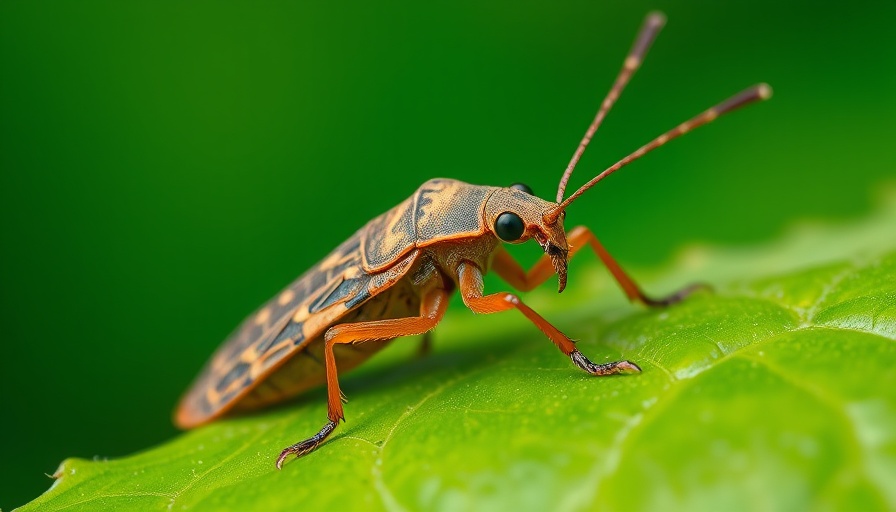
Understanding the Squash Bug's Threat to Your Garden
Imagine stepping into your garden, only to find your once-thriving squash plants wilting before your eyes. This is a common reality for gardeners facing the menace of squash bugs (Anasa tristis), known for their voracious appetite and stealthy presence. These insects are not just a nuisance; they are serious pests, responsible for significant damage to cucurbit plants such as squash, pumpkins, cucumbers, and melons, causing alarming declines in their health and yield.
Identifying Squash Bugs: The First Step in Control
Identification is crucial for effective management of squash bugs. Adult squash bugs are dark gray to brown, typically about five-eighths of an inch long, and resemble shield-shaped insects. Female squash bugs lay their distinctive orange-yellow clusters of eggs on the undersides of leaves. These eggs can turn bronze prior to hatching, allowing for easier spotting. Newly hatched nymphs start off small, black, and spider-like, eventually progressing through five instars into their mature form. Recognizing these initial signs can save your plants from severe damage.
The Lifecycle of Squash Bugs: What Gardeners Need to Know
Understanding the lifecycle of squash bugs enhances your ability to combat them. The adults emerge in early June, laying eggs that hatch in about a week. The nymphs are particularly destructive as they feed aggressively. Gardeners should monitor these pests throughout the growing season and take action before populations explode. If left unchecked, these pests can cause widespread wilting, yellowing leaves, and even plant death due to the toxic substances they inject into their host plants.
Effective Monitoring Techniques for Early Detection
Regularly inspecting your squash plants is vital. Look for the characteristic yellow spots and wilting leaves starting mid-summer. Traps made of cardboard can be placed in the garden to catch squashed bugs as they migrate. Additionally, keep an eye out for telltale signs like the sunken, corky spots on fruits indicating a severe infestation. The sooner you catch these pests, the better chance your plants have for recovery.
Organic Control Methods: Nurturing Your Plants and the Environment
When it comes to pest management, many gardeners prefer organic methods that minimize ecological impact. Handpicking squash bugs can be effective, though time-consuming. Introducing natural predators, such as ladybugs and lacewings, can also help reduce squash bug populations. Additionally, planting companion flowers like marigolds around squash can help deter these pests naturally, promoting a healthy ecosystem in your garden.
Cultural Control Practices that Make a Difference
Improving garden health plays a significant role in squash bug management. Practice crop rotation, ensuring that cucurbits are not planted in the same location year after year. This disrupts the lifecycle of pests. Furthermore, maintaining healthy soil through composting and regular mulching strengthens plant defenses, making them less appealing to pests. Proper watering techniques also ensure that your plants are robust, reducing vulnerability.
When to Consider Pesticides: Chemical Control Options
While organic methods are ideal, sometimes the infestation is overwhelming, and pesticides may be necessary. Use chemical options as a last resort, applying targeted treatments in early morning or late evening when pollinators are less active. Be sure to follow application guidelines closely to protect beneficial insects and avoid degrading your garden’s health.
Long-term Strategies for Squash Bugs Prevention
To prevent future infestations, implement long-term strategies like diversifying your garden plants and maintaining clean garden practices. Removing debris and leftover vegetation can disrupt squash bug habitats. Lastly, consider planting resistant varieties of squash and pumpkins. By focusing on these practices, gardeners can maintain healthy plants while minimizing the chances of squash bugs returning.
Squash bugs can be a frustrating adversary for any gardener, but understanding their biology, lifecycle, and control methods allows you to take proactive steps. Engage with your plants, implement diverse strategies, and your garden can flourish, free from these pests!
 Add Row
Add Row  Add
Add 




Write A Comment